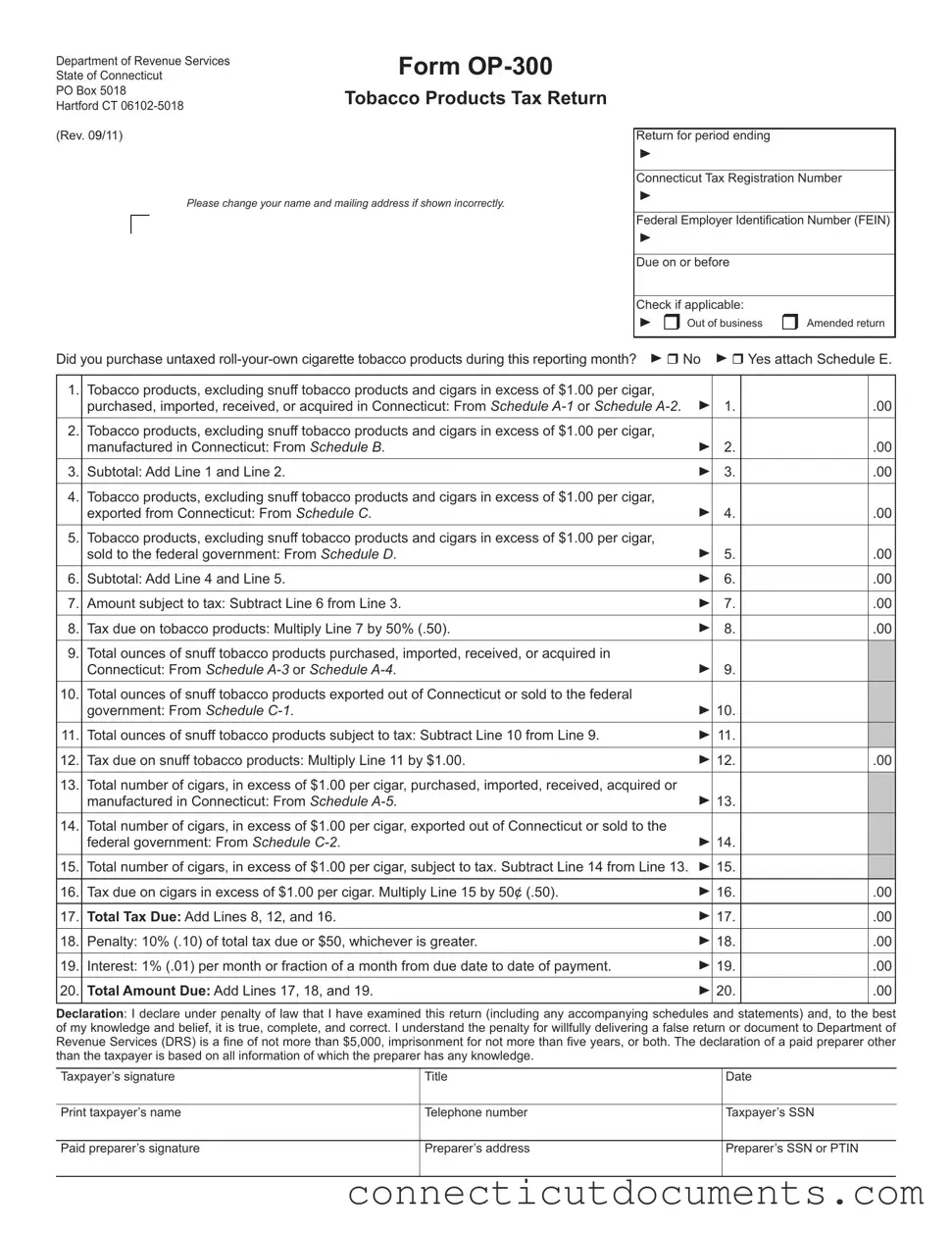What is the Connecticut OP-300 form?
The Connecticut OP-300 form is the Tobacco Products Tax Return that must be filed by distributors of tobacco products in Connecticut. It reports the purchase, importation, and sale of tobacco products and calculates the tax due on those products.
Who needs to file the OP-300 form?
Any distributor of tobacco products in Connecticut must file the OP-300 form. This includes both resident and non-resident distributors who purchase, import, or manufacture tobacco products within the state.
When is the OP-300 form due?
The form must be filed by the 25th day of the month following the reporting month. For example, the return for January must be submitted by February 25. Even if no tax is due, a return must still be filed.
How do I pay the tax due on the OP-300 form?
You can pay electronically through the Taxpayer Service Center (TSC) at www.ct.gov/TSC. Alternatively, if you choose not to pay electronically, make your check payable to the Commissioner of Revenue Services and mail it to the address listed on the form.
What if I made a mistake on my OP-300 form?
If you need to correct an error, check the box for "Amended return" on the form and submit the corrected information. Ensure that you provide accurate details to avoid penalties.
What happens if I do not file the OP-300 form on time?
If you do not file the form by the due date, you may incur penalties and interest on the amount due. The penalty is 10% of the total tax due or a minimum of $50, whichever is greater. Interest accrues at a rate of 1% per month from the due date until payment is made.
What information do I need to complete the OP-300 form?
You will need your Connecticut Tax Registration Number, Federal Employer Identification Number (FEIN), and details regarding your tobacco product purchases, sales, and any applicable schedules. Ensure all information is accurate and complete before submitting the form.
Where can I find additional resources or assistance regarding the OP-300 form?
For further information, you can contact the Excise Taxes Unit at 860-541-3224, Monday through Friday, from 8:30 a.m. to 4:30 p.m. You can also visit the Department of Revenue Services website at www.ct.gov/DRS for forms and publications.
